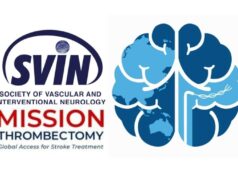On the 13 June 2013, the first use of deep brain stimulation to the brain’s “feeding centre”—the lateral hypothalamic area (LHA)—according to a pilot study presented at the International Neuromodulation Society’s (INS) 11th World Congress (8–13 June, Berlin, Germany), was associated with a weight loss trend in morbidly obese patients whose stimulation was tuned to increase metabolism with novel guidance from metabolic chamber data.
Michael Oh of the Department of Neurosurgery at the Allegheny General Hospital in Pittsburgh, USA, presented the study and said animal and lesioning studies have suggested the LHA may be a promising neurostimulation target to augment weight-loss efforts for morbidly obese patients, patients whose weight exceeds 50% of the normal range, and those who had failed in other weight-loss attempts.
In the US Food and Drug Administration (FDA)-approved study focused on safety and early efficacy findings, three patients who had failed to keep weight off after gastric bypass surgery received deep brain stimulation implants in 2009–2010.
With collaborators at Pennington Metabolic Center in Baton Rouge, USA, Oh and colleagues arranged for the patients to undergo detailed metabolic studies over three days. Based on results of individual testing stimulation with a different electrical contact on the deep brain stimulation leads on each of those days, the researchers chose a stimulation regime that showed the greatest effect in raising resting metabolic rate. The rate was measured while the patients rested in an enclosed metabolic chamber where their respiration and related factors were analysed, according to a press release.
Patients were encouraged but not required to lie down during testing, and were also allowed to read, surf the Internet, or watch television. According to Oh, infrared sensors and videotape footage were used to track activity. During periods of relative inactivity, the rate of energy the patients expended was captured. A baseline score was measured when the device was turned off, with multiple “off” readings averaged over the time in the chamber and then repeated with the stimulation “on”. Rates of change were considered indeterminate if a patient’s spontaneous movement made it difficult to tell if it was caused by stimulation or motion.
In addition, the patients’ lipid profiles and psychological factors were screened. No negative effects on psychological or cognitive function were found, according to Oh.
After nine months, one patient who had experienced a 9% increase in resting metabolic rate reduced his weight by 16.4%. Another patient, whose metabolic chamber metabolic rate change was indeterminate due to motion during the selected stimulation approach, lost 12.3% of her weight after 11 months at the optimal setting. The final patient had a 0.9% decrease after 16 months at optimal settings, but also commented, according to the study, that this was the first time in her life that she did not have to fight constant hunger, and her binge eating score reduced from severe to within normal range.
The metabolic studies proved useful to guide optimal settings, Oh said. The team commented that expanded research studies might show that optimal settings would reduce appetite and food cravings too.
With the existing patients, the team stated they will continue to monitor effects of hypothalamic deep brain stimulation and examine persistence of the impact on metabolic rate.













